Day 26 was my last day making the guitar with Roy. I took it home and spent a couple of days stretching the strings and getting a feel for it. I also took some ‘tap tone’ samples in an attempt to have a measure of the guitar’s air resonance. I’m still trying to understand how to read the graph and, in the long term, how I can use this data.
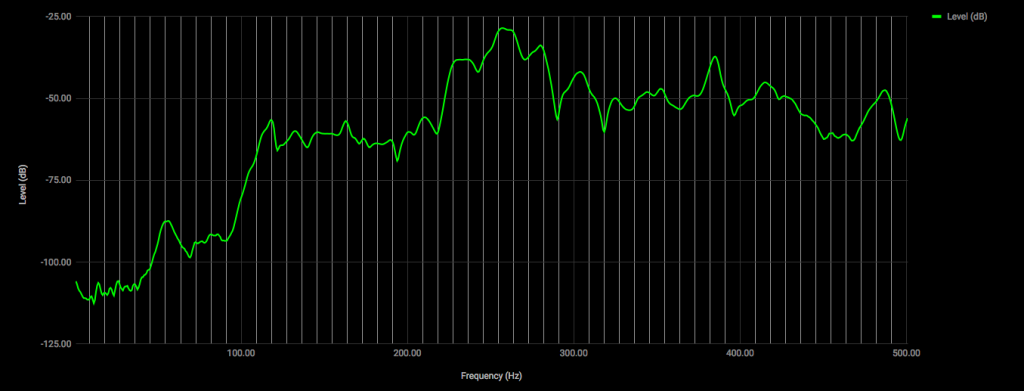
The main air resonance is 118Hz (a little over Bb) and, if I’m reading it correctly, the resonance of the top is 257Hz (between B and C) and the resonance of the back is 269Hz (between C and C#).
T(1,1)1 = 118Hz (between Bb and B); T(1,1)2 = 257Hz (between B and C); T(1,1)3 = 269Hz (between C and C#).
A few days later, I went to my guitar teacher, Rob Johns, who has commissioned the new lattice design of guitar from Roy and providing feedback with each iteration. He played my instrument and it sounded really nice. Compared blind to other guitars he played (lattice and non-lattice), it sounded very open – like it was being played in a large hall with a vaulted ceiling. I was pleased.
I took the guitar home and removed the strings so that I could finish the polishing. First with a heavily diluted rubber of 2 drops shellac, six of meths and one drop of oil. I rubbed quickly and thoroughly all over the guitar, replenishing the mixture when the rubber felt really dry. The finish improved and I left the guitar to hang for a week.
After an agonising wait, I then burnished the whole guitar with Super Nikco and re-strung it. Here, at last, is the finished guitar.
I’m pleased with the level of workmanship for my first guitar. Overall, it looks quite impressive, structurally it is very sound and inside it is neat and tidy, too. The magnetic arm rest works really well, the French polish finish is attractive, and despite the idiosyncratic design of the rosette and two attempts at making it, I got the technique down.
However, there are definitely areas I can improve: the binding is uneven in a couple of places because I scraped it a bit thin on the curves of the upper bout (despite Roy warning me not too!); there’s a burn on the lower waist due to a faulty thermostat on the bending iron and I didn’t have the experience to notice (thankfully it matches the darker grain of the walnut); the wings of the bridge are not as sharply cut as I’d like; and the carved head isn’t 100% symmetrical. These are details most people don’t notice, but I’m well aware of them.
A month later, I visited Rob Johns again to record some sound samples. They were recorded in one take on a Marantz handheld digital recorder using the internal stereo microphone. What do you think?
Torija by Federico Moreno Torroba
Prelude No. 1 by Heitor Villa-Lobos
La Miñona de Cataluña by Gaspar Sanz
The Miller’s Dance by Manuel de Falla (short strumming sample)
Joy by Rob Johns
Here are a couple of recordings in my local church, again on the same handheld recorder:
I might add that although based on Roy’s lattice design, there are some differences, too, which may contribute to it sounding slightly different. This is the basic specification of my guitar:
- ‘Alpine’ spruce soundboard with spruce and carbon fibre lattice strutting
- Walnut back and sides, laminated with cherry and walnut. Back bars not scalloped. Linings reinforced with veneer. Coat of shellac on inside back.
- Cedrela neck
- Padauk bridge (15g)
- Rocklite fingerboard
- Rubner machine heads
- Friederich plantilla/Torres head shape
- Sound port
- Weight: 1699 grams
The five features here that are not typical of Roy’s recent builds are:
- the walnut back and sides,
- the lightweight padauk bridge,
- the cedrela neck,
- the sound port and
- the slightly larger Friederich body shape.
Each or all of these could make a difference to the sound, although to what extent each would make an audible difference, I’m less sure about.
Even with the two layers of laminate veneer (which Roy uses), the solid walnut back and sides may have had an influence on the overall sound. We know that Roy’s recent guitars with oak, rosewood and wenge backs and sides (all laminated) each sounds different. On my guitar, in addition to the use of walnut, the reinforced linings and unscalloped bars will have increased the rigidity of the back and sides slightly, too.
The Friederich plantilla is slightly larger than the Torres or Romanillos plantillas, which Roy has been using, but not by a large amount.
The sound port seems to make a difference to the experience of playing, in that the sound escapes upwards as well as outwards, but we compensated for the sound port by reducing the diameter of the sound hole, so I doubt it is changing the overall sound of the guitar.
Some of the difference in sound compared to Roy’s designs, will be due to a combination of all of these changes and the character of the actual wood used, but perhaps most significantly due to the lower profile, light weight padauk bridge.
Anyway, enough analysis for now. I’m going to play some guitar…
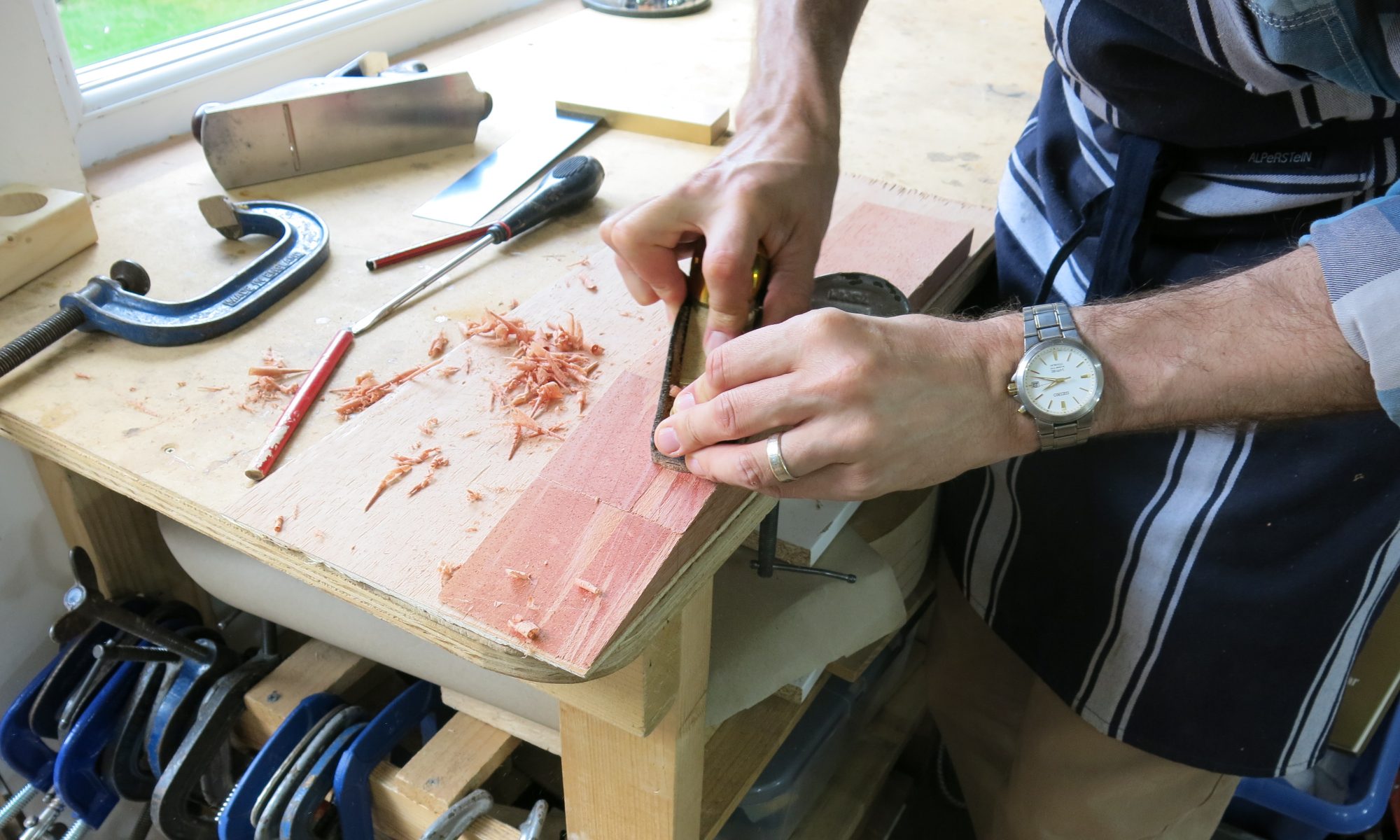
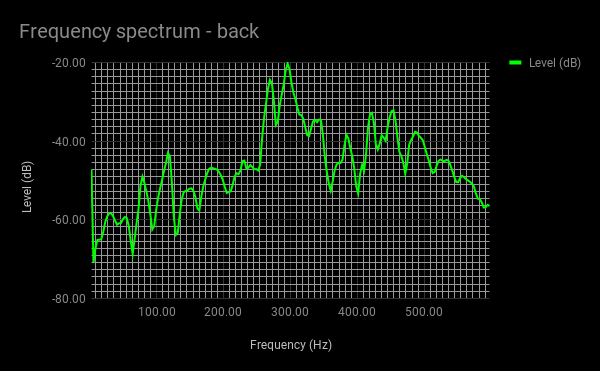
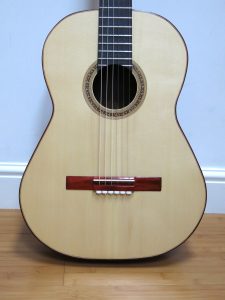
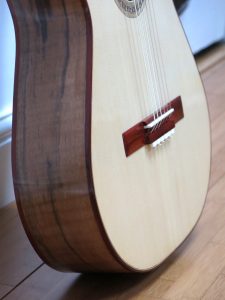
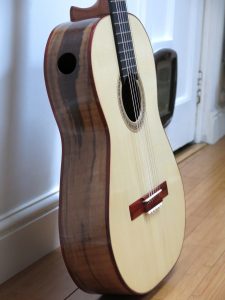
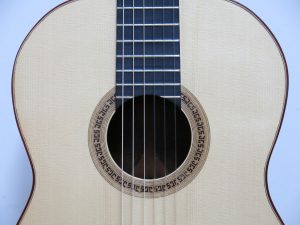
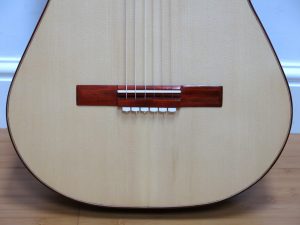
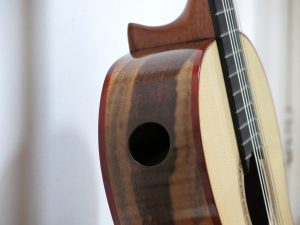
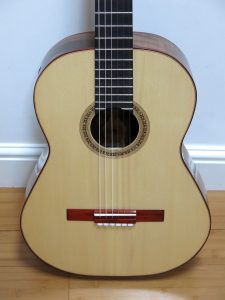
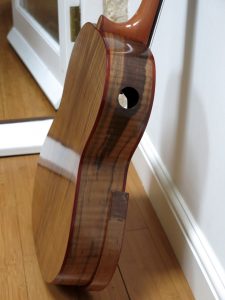
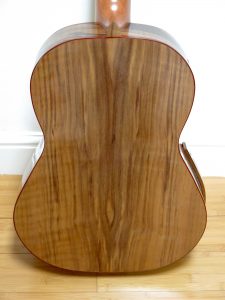
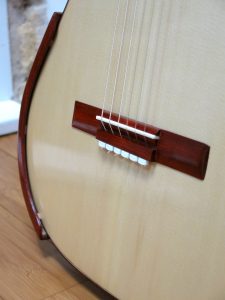
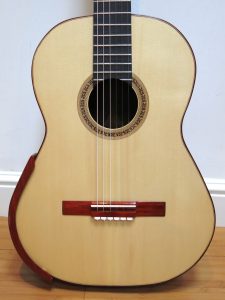
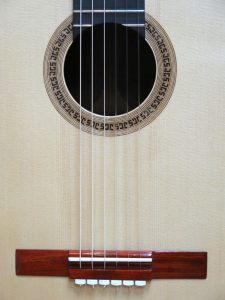
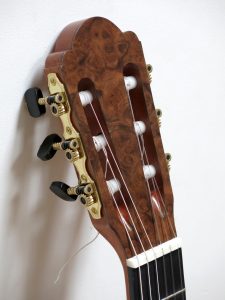
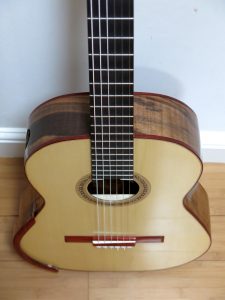
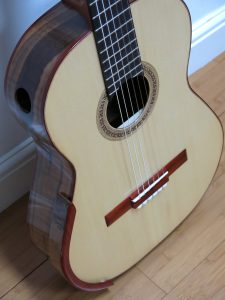
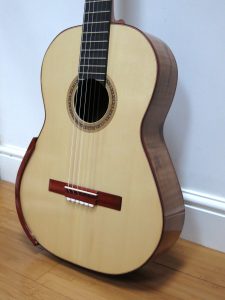

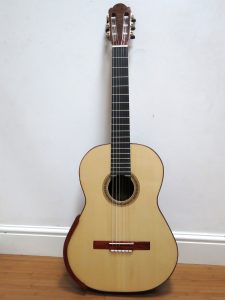
I missed when you posted this on twitter so just seeing this now. The guitar sounds lovely! Your inspiring me to go on a similar journey to build my own. Cheers, Scott
Impressive! No surprise.